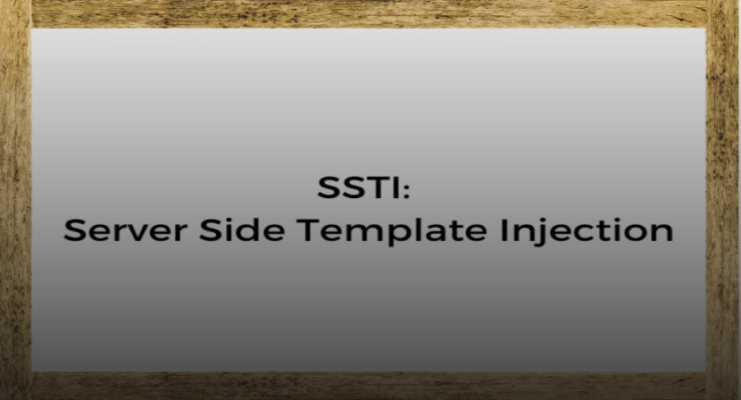Request smuggling is a vulnerability that occurs when there is a discrepancy in how front-end and back-end servers interpret and handle HTTP requests. This vulnerability occurs due to inconsistencies in the implementation of HTTP specifications across different components of a web application architecture, such as load balancers, caching servers, or proxy servers.
In a typical HTTP transaction, the client sends a request to the server, and the server responds accordingly. However, intermediate servers or components may process the client’s request in certain situations before reaching the destination server. Each server or component involved may interpret the request headers differently, leading to inconsistencies that an attacker can exploit.
Request smuggling attacks often rely on the manipulation of headers, such as Content-Length and Transfer-Encoding, which are crucial for determining the size and format of the request body. By carefully crafting a request with conflicting or ambiguous headers, an attacker can trick the front-end and back-end servers into interpreting the request differently.
Key Terms to Understand
1. HTTP/1.0 vs. HTTP/1.1:
This vulnerability arises due to a discrepancy in how different HTTP versions handle requests and responses.
In HTTP/1.0, each request is sent individually, and the server closes the connection after sending the response.
However, in HTTP/1.1, multiple requests can be sent over a single connection, which remains open until explicitly closed by the client or server.
The vulnerability occurs when a web server incorrectly handles the order and boundaries of requests in a mix of HTTP/1.0 and HTTP/1.1 versions, leading to request smuggling attacks.
2. Connection: Keep-Alive vs. Close:
The “Connection” header is used to specify whether the client wants to keep the connection open for subsequent requests (Keep-Alive) or close it after the current one (Close). The vulnerability arises when an attacker manipulates this header to confuse the web server.
By specifying “Connection: Keep-Alive” for the first request and “Connection: Close” for the subsequent one, the attacker can trick the server into misinterpreting the requests, potentially allowing request smuggling.
3. Chunked transfer encoding:
This vulnerability revolves around transferring data between the client and server. Chunked transfer encoding is a technique where data is split into smaller chunks before being sent to the server.
Each chunk is preceded by its size and a CRLF (Carriage Return Line Feed) sequence. The server reads the chunks until it receives a zero-sized chunk, indicating the end of the data.
The vulnerability occurs when the server does not properly handle the chunked encoding and misinterprets the boundaries, leading to request smuggling attacks.
Attackers may create a discrepancy in size between the Content-Length header and chunk sizes, confusing the server and potentially allowing them to smuggle malicious requests.
TYPES of Request Smuggling:
- CL.TE: In this type of request smuggling, the attacker manipulates the Content-Length and Transfer-Encoding headers to confuse the front-end and back-end servers. The attacker tricks the front-end server into forwarding incomplete data to the back-end server by specifying a smaller Content-Length value compared to the payload size. The backend server reads the incomplete payload and waits for more data. The attacker then sends another request, using the Transfer-Encoding header to specify chunked encoding, making it appear as though the initial request was not fully transmitted. This causes the backend server to incorrectly interpret the second request as part of the first incomplete request.
- TE.CL: In TE.CL requests smuggling, and the attacker reverses the scenario from CL.TE. The attacker sends a request with a Transfer-Encoding header and a chunked payload. The front-end server interprets the data as chunked and forwards it to the back-end server, which reads the payload. However, the attacker then includes a Content-Length header with a value greater than the actual payload size, causing the front-end server to interpret the request as incomplete incorrectly. The front-end server then waits for additional data, which the attacker can provide in subsequent requests.
- TE.TE: In this type of request smuggling, the attacker includes multiple Transfer-Encoding headers in the request. This confuses the front-end server, as it may interpret each Transfer-Encoding header separately. The server may mix up the ordering of the encoding methods specified and incorrectly parse the request, leading to potential request smuggling vulnerabilities.
- CL.CL: In CL.CL request smuggling, the attacker includes multiple Content-Length headers in the request. Similar to TE.TE confuses the front-end server, which may interpret each Content-Length header separately. The server may mistakenly parse and process the request incorrectly, potentially allowing for request smuggling attacks.
Attacks Techniques:
1. Connection Splitting: In a connection splitting attack, an attacker sends multiple requests within a single TCP connection, using maliciously crafted headers to trick the front-end server into treating the requests as separate, while the backend server might see them as a single request.
2. HTTP/1.0 Smuggling: This type of request smuggling exploits inconsistencies in how front-end and back-end servers handle the HTTP/1.0 protocol. By manipulating the Transfer-Encoding and Content-Length headers, an attacker can send multiple requests that are interpreted differently by the servers.
3. HTTP/2 Smuggling: HTTP/2 allows for multiplexing multiple requests within a single TCP connection. Attackers can abuse this feature by manipulating frame headers, causing discrepancies in how front-end and back-end servers interpret and process the requests.
4. WebSocket Hijacking: Request smuggling attacks can also be carried out on WebSocket connections. Attackers can manipulate WebSocket frame headers to confuse the front-end server about the number and boundaries of requests, leading to smuggling attacks.
It is important to note that request smuggling attacks can be highly specific to the target application or server configuration.
Request smuggling vulnerabilities typically occur when there is a mismatch in the interpretation of HTTP requests between different components of a web application stack. This can lead to security vulnerabilities that attackers can exploit.
Here are a few examples of common request smuggling vulnerabilities:
1. HTTP Request Smuggling via Content-Length Header:
- The attacker sends a request with a mismatched or malformed “Content-Length” header.
- A front-end server may interpret this request as multiple separate requests, while the back-end server treats it as a single request.
- This can lead to the backend server processing subsequent requests incorrectly or allowing unauthorized access.
2. HTTP Request Smuggling via Transfer-Encoding Header:
- The attacker sends a request with a mismatched or manipulated “Transfer-Encoding” header, such as mixing “chunked” and “Content-Length” encoding.
- The front-end server or firewall might interpret the request differently from the back-end server.
- This inconsistency allows an attacker to smuggle requests that are not detected or processed properly, potentially bypassing security measures.
3. HTTP Request Smuggling via HTTP Verb Tunnelling:
- An attacker sends a request using HTTP verb tunnelling techniques like “POST-based GET” or “PUT-based DELETE.
- The front-end server or security devices may interpret the request differently from the back-end server that ultimately processes the request.
- This discrepancy can lead to requests being executed with unintended methods or actions, circumventing security controls.
4. HTTP Request Smuggling via HTTP Pipelining:
- An attacker sends pipelined requests, where multiple requests are sent without waiting for individual responses.
- In some cases, intermediate proxies or firewalls might misinterpret or split the requests, leading to inconsistent processing by the backend server.
- This can result in unauthorized actions performed by attackers or the concealment of malicious activities.
5. HTTP Request Smuggling via Server-side Parsing Differences:
- Attacker sends requests that exploit differences in how the front-end and back-end servers parse and process incoming requests.
- Due to inconsistencies in their parsing implementations, the front-end server may interpret the request one way, while the back-end server interprets it differently.
- This can result in requests being processed incorrectly or granting unauthorized access to sensitive resources.
6. Request Smuggling with Unicode Encoding:
- The attacker sends requests with Unicode-encoded characters or other encoding techniques that can bypass input validation or filtering mechanisms.
- The front-end server might interpret the encoding differently from the back-end server, resulting in different request processing and potential security vulnerabilities.
7. Request Smuggling via HTTP Header Injection:
- The attacker injects malicious or unexpected characters into HTTP headers, exploiting header parsing and interpretation vulnerabilities.
- The front-end and back-end servers may handle these injected characters differently, leading to inconsistent processing or security bypasses.
Developers and system administrators need to be aware of these vulnerabilities to ensure proper mitigation measures are implemented and secure coding practices are followed.
It is crucial to understand that these vulnerabilities can exist due to a combination of misconfigurations, vulnerabilities in specific web servers, or inconsistencies in how different components interpret HTTP requests. Regular security testing, secure coding practices, and adopting the latest patches and updates can help prevent request smuggling attacks.
Real World Examples:
A few of the notable real-world examples of request smuggling vulnerability are the
- “HTTP Request Smuggling in AWS Elastic Load Balancer” vulnerability, also known as “http-desync-lb.”
In August 2019, researchers discovered a new variant of HTTP request smuggling that affected the AWS Elastic Load Balancer (ELB) infrastructure. The vulnerability relied on a combination of multiple techniques, including Content-Length and Transfer-Encoding headers.
By manipulating the request headers and sending specially crafted requests, an attacker could exploit the inconsistencies between front-end and backend servers in interpreting the request boundaries. In this case, the attacker could bypass certain security mechanisms, gain unauthorized access, or execute arbitrary code on vulnerable applications running behind the AWS ELB.
The vulnerability impacted numerous websites and web applications hosted on the AWS infrastructure, potentially exposing sensitive data or allowing for unauthorized actions.
This real-world example highlights the importance of understanding and addressing request smuggling vulnerabilities, as even widely used and trusted systems like AWS can be susceptible to such attacks.
2. In July 2020, a request smuggling vulnerability known as “HTTP Desync Attack on Apache Tomcat” was discovered. This vulnerability affected the widely used Apache Tomcat server, which is used to host many popular websites and web applications. By exploiting this vulnerability, an attacker could manipulate the request headers to bypass security mechanisms, gain unauthorized access, or execute arbitrary code on the server.
This real-world example demonstrates that even well-established and widely adopted software like Apache Tomcat can have request smuggling vulnerabilities, emphasizing the importance of proactive security measures and regular software updates.
3. In September 2020, a research team discovered a request smuggling vulnerability in the Citrix NetScaler Application Delivery Controller (ADC). This vulnerability, known as “Citrix NetScaler ADC Request Smuggling,” allowed attackers to bypass security controls by manipulating request headers and gain unauthorized access to sensitive information or execute code on vulnerable systems. The Citrix NetScaler ADC is a popular technology used for load balancing and optimizing the performance of web applications, making this vulnerability particularly concerning. This real-world example further emphasizes the need for continuous infrastructure software monitoring and patching to mitigate potential request smuggling attacks.
Payloads Examples:
1. Content-Length and Transfer-Encoding header conflict:
POST /path HTTP/1.1
Content-Length: 10
Content-Type: application/x-www-form-urlencoded
Transfer-Encoding: chunked
0
G
Explanation:
The Content-Length header specifies the length of the request content in bytes, indicating that the payload is 10 bytes long. On the other hand, the Transfer-Encoding header specifies that the payload is encoded in chunks using the “chunked” encoding.
In a valid HTTP request, these headers should not conflict. However, in this case, the Content-Length is set to 10, indicating a specific content length, but the body of the request is a chunked encoding, which indicates that the content length is unknown and will be determined by the chunks.
The payload itself consists of a single chunk with a size of 0, followed by a newline character, and then a letter “G”. The 0 chunk size indicates the end of the chunks. Therefore, the actual content of the payload is just the letter “G”.
This conflicting payload may cause issues for servers or HTTP proxies that are parsing the request. They may not handle this conflicting scenario correctly, leading to potential errors or incorrect processing of the request.
2. Teardrop attack:
POST /path HTTP/1.1
Content-Length: 6
Content-Type: application/x-www-form-urlencoded
Transfer-Encoding: chunked
A
Explanation:
The payload in the Teardrop attack is the data that is sent in the POST request to the specified path. In this case, the payload consists of a single letter “A” as the content. The Content-Length header specifies the length of the payload, which is 6 bytes in this case. The Content-Type header specifies the format of the data, which is application/x-www-form-urlencoded. Finally, the Transfer-Encoding header indicates that the data is sent in chunks, although there is only one chunk in this example.
3. Reverse order of Content-Length and Transfer-Encoding headers:
POST /path HTTP/1.1
Transfer-Encoding: chunked
Content-Length: 6
Content-Type: application/x-www-form-urlencoded
A
Explanation:
In the provided HTTP request, the Content-Type header specifies the format of the data being sent in the request, while the Content-Length header indicates the length of the request body in bytes. The Transfer-Encoding header, on the other hand, is used to indicate the encoding transformation applied to the message body, such as “chunked,” which is often used for sending data in smaller, variable-sized chunks.
4. Splitting the request over multiple packets:
Packet 1:
POST /path HTTP/1.1
Host: example.com
Transfer-Encoding: chunked
Content-Type: application/x-www-form-urlencoded
Content-Length: 4
Packet 2:
A
Explanation:
In this scenario, the HTTP request is being split into multiple packets. The first packet (Packet 1) contains the initial part of the request, including headers, while the second packet (Packet 2) contains the remaining part of the request body.
The inconsistency between the Content-Length header and the use of Transfer-Encoding: chunked is the key point of vulnerability. The Transfer-Encoding header implies that the request body will be sent in smaller chunks, while the Content-Length header contradicts this by specifying a fixed length for the body. This discrepancy can lead to different interpretations by front-end and back-end servers, potentially causing security vulnerabilities or unauthorized actions. This type of situation is often exploited in request smuggling attacks to bypass security measures.
5. Using different encodings for front-end and backend servers:
POST /path HTTP/1.1
Content-Length: 5
Transfer-Encoding: gzip
Content-Type: application/x-www-form-urlencoded
A
Explanation:
In this example, the HTTP request indicates the use of different encodings for the front-end and back-end servers. Specifically, the Content-Length header suggests a request body length of 5 bytes, while the Transfer-Encoding header specifies the use of the “gzip” encoding. This discrepancy in encoding between the headers can lead to inconsistencies in how the server’s request is processed, potentially leading to security vulnerabilities.
These inconsistencies can result in various Security Implications, including:
1. Cache Poisoning
An attacker can exploit request smuggling to poison the cache of a CDN or proxy server. This can be achieved by sending a specially crafted HTTP request split into multiple parts, each interpreted differently by the front-end and back-end servers. The attacker can manipulate the “Content-Length” or “Transfer-Encoding” headers to create inconsistencies in request handling. The attacker can trick the CDN or proxy server into storing malicious content in its cache. Subsequent users who request the same content from the cache will receive the malicious content, leading to potential attacks such as serving malicious scripts or malware.
2. HTTP Response Spitting:
Request smuggling vulnerabilities can be exploited to inject malicious responses into subsequent requests, which can result in HTTP response-splitting attacks. The attacker can send a request that is split into separate parts, each interpreted by different components within the server infrastructure. By manipulating the request headers, such as adding multiple “Content-Length” headers or injecting carriage return and line feed characters, the attacker can cause the server to generate a response with multiple headers. These injected headers can be crafted in a way that leads to splitting the response into separate parts. An attacker can then inject malicious content into the second part of the response, leading to potential XSS or session hijacking attacks when subsequent requests are made.
3. Unauthorized Access
By exploiting request smuggling vulnerabilities, an attacker can craft requests that bypass access controls and gain unauthorized access to sensitive resources or perform actions on behalf of other users.
For example, the attacker can send a request that is interpreted differently by the front-end and backend servers, causing the front-end server to handle the request incorrectly and forward it to the backend server without proper authorization checks. This can allow the attacker to access sensitive resources or perform actions that were intended to be restricted to authorized users only.
4. Cross-Site Request Forgery (CSRF):
Inconsistent handling of HTTP requests due to request smuggling vulnerabilities can lead to CSRF attacks. An attacker can craft a request that triggers a smuggling vulnerability, causing the back-end server to interpret the request differently than the front-end server. This can lead to a situation where the victim’s browser sends a request with an unintended action to the server.
For example, the attacker can manipulate the request to perform a fund transfer on a banking website when the victim is logged into their account and unknowingly clicks on a seemingly innocent link. The victim’s browser will send the forged request, and if the server fails to properly validate the request origin or enforce anti-CSRF tokens, the unwanted fund transfer will be executed.
5. Server-side request forgery (SSRF):
Request smuggling vulnerabilities can be exploited to trigger SSRF attacks. An attacker can make the target server perform unwanted requests on their behalf by manipulating the HTTP request and inducing inconsistencies in request handling.
For Example, the attacker can send a manipulated request that instructs the target server to make a request to internal network resources, potentially retrieving sensitive files or performing actions within the internal network. This can be accomplished by injecting special characters or splitting the request headers in a way that confuses the server’s interpretation of the request.
6. SQL injection:
Request smuggling vulnerabilities can be leveraged to execute SQL injection attacks. An attacker can craft a request that triggers a smuggling vulnerability and causes the backend server to interpret the request differently from the front-end server. The attacker can trick the server into executing unintended database queries by manipulating the request parameters, such as injecting SQL statements into the request. This can lead to unauthorized access to the database or modification of the underlying data.
For example, the attacker can send a request with crafted SQL statements in the parameters, causing the server to execute these statements and potentially retrieve sensitive data.
7. Remote File Inclusion (RFI):
Exploiting request smuggling vulnerabilities can also enable RFI attacks. By manipulating the HTTP request, an attacker can craft a request that includes remote file paths. The server may interpret the request in a way that allows the inclusion and execution of these remote files, leading to arbitrary code execution on the server.
For Example, the attacker can modify the “file” parameter in the request to point to a malicious PHP script hosted on a remote server. When the server processes the request and includes the remote file, the malicious PHP script will be executed, allowing the attacker to gain control over the server and potentially access sensitive data or perform unauthorized actions.
8. Command Injection:
HTTP request smuggling can be used to manipulate requests and inject malicious command-line commands. This can happen when there are inconsistencies in how the server handles incoming requests, such as differences in parsing techniques or handling different HTTP headers.
For example, an attacker can send a specially crafted HTTP request that includes a payload containing malicious commands. If the server misinterprets the request due to inconsistent processing, it may execute those commands, leading to unauthorized access or arbitrary code execution.
9. XML External Entity (XXE) Injection:
Inconsistent handling of HTTP requests can also result in XXE vulnerabilities, where attackers exploit XML parsing features to perform malicious actions. HTTP request smuggling can play a role in this vulnerability by allowing an attacker to send a manipulated HTTP request containing a specially crafted XML payload.
The payload may include external entity references pointing to sensitive files. When the server receives and processes the request, it may mishandle the XML parsing, allowing the attacker to read sensitive data from the referenced files or carry out server-side request forgery and denial-of-service attacks.
10. Remote Code Execution (RCE):
HTTP request smuggling can contribute to RCE vulnerabilities when inconsistencies in request handling are present. Attackers can exploit these inconsistencies to inject and execute arbitrary code on the server.
For Example, if the server fails to handle the Content-Length header or variations in request parsing properly, an attacker can smuggle a request with a specially crafted payload. This payload could include a malicious script disguised as a valid file, taking advantage of a web application’s file upload functionality. Once the server processes the request, it may unwittingly execute the uploaded script, granting the attacker full control over the system and allowing them to perform remote code execution.
11. Data exposure and leakage:
HTTP request smuggling can lead to data exposure and leakage vulnerabilities. These arise from discrepancies in how requests are interpreted across different application components. Attackers exploit these inconsistencies to expose sensitive data.
For instance, attackers can craft a request with a manipulated payload if a server mishandles the Content-Length header. This payload could include sensitive data intended to remain private. Consider a scenario where an attacker targets a file upload feature. By exploiting vulnerabilities, they smuggle a request that triggers improper request processing.
As the server processes the manipulated request, sensitive data might be inadvertently revealed. Inaccurate handling of discrepancies can lead to unauthorized data access. Preventing such vulnerabilities demands robust security measures, careful request handling, and thorough validation to thwart request smuggling and its associated data exposure risks.
Mitigation:
To mitigate request smuggling vulnerabilities, it is essential to adhere strictly to HTTP standards and ensure consistent request interpretation across all components of the web application infrastructure. Additionally, employing security measures like input validation, secure coding practices, and security testing can help identify and address these vulnerabilities.
1. Use a secure load balancer or proxy server: Set up a secure one that can handle and process incoming requests properly. It should be capable of detecting and preventing request smuggling attacks.
2. Implement proper request parsing: Ensure that your application properly parses and handles HTTP requests. Implement strict parsing rules adhering to the HTTP specification to prevent any ambiguity attackers may exploit.
3. Deploy a Web Application Firewall (WAF): A WAF can help detect and block request smuggling attacks by monitoring and analyzing incoming requests. It can also identify any suspicious traffic patterns and block them.
4. Keep software and frameworks up to date: Regularly update your web server, application server, and other software components to the latest stable version. This helps to ensure that known vulnerabilities and security issues are patched and mitigated.
5. Validate and sanitize user input: Implement strong validation and sanitization techniques to ensure that all user input is properly validated and sanitized before processing. This prevents attackers from injecting malicious requests.
6. Implement proper error handling: Design your application to handle errors gracefully instead of leaking sensitive information that attackers can exploit. Implement detailed logging and monitoring to detect any unusual behaviour.
7. Implement secure coding practices: Follow secure coding practices, such as input validation, proper session management, and secure configuration, to reduce the surface area for attackers to exploit.
8. Conduct regular security audits and penetration testing: Regularly perform security audits and penetration testing to identify and address any vulnerabilities or weaknesses in your application. This helps to ensure that your application remains secure against evolving threats.
9. Educate developers and administrators: Train your development team and system administrators about request smuggling attacks and secure coding practices. Promote a security-first mindset within your organization and encourage them to stay updated with the latest security best practices.
10. Monitor Network Traffic: Monitor and analyze network traffic to identify any suspicious activities or patterns that might indicate a request smuggling attack. Implement intrusion detection and prevention systems to detect and block such attacks in real time.
A combination of secure coding practices, regular updates, monitoring, and defensive measures can help mitigate the risk of request smuggling attacks.
Future Trends:
As of now, request smuggling vulnerability remains a significant concern in the cybersecurity landscape. Here are some current market trends related to this vulnerability:
1. Increased awareness: Organizations and security experts have become more aware of request smuggling vulnerabilities and their potential impact on web applications. This increased awareness has prompted organizations to prioritize vulnerability assessments and implement mitigation strategies.
2. Rising number of public disclosures: The number of public disclosures related to request smuggling vulnerabilities has been on the rise. Independent security researchers, bug bounty programs, and security vendors frequently publish reports highlighting specific instances of request smuggling to raise awareness and promote further research.
3. Continuous research and development: Security researchers and hackers continue discovering new variations and attack vectors for smuggling requests. This ongoing research helps in identifying and patching vulnerabilities in various web servers, application frameworks, and content delivery networks (CDNs).
4. Vendor response and patching: Web server and application framework vendors are actively working towards addressing request smuggling vulnerabilities by releasing security patches and updates. Their responses vary in effectiveness and speed, depending on the severity of the reported vulnerabilities and the prioritization of the vendor.
5. Regulatory requirements: Regulatory bodies and compliance frameworks are increasingly focusing on web application security, including vulnerabilities like request smuggling. Organizations are expected to adhere to these regulations and frameworks, leading to a more comprehensive approach towards vulnerability management.
6. Incorporation in security testing tools: Security testing tools, such as DAST (Dynamic Application Security Testing) and SAST (Static Application Security Testing), are being updated to include detection capabilities for request smuggling vulnerabilities. This integration makes it easier for organizations to identify and remediate these vulnerabilities in their web applications.
7. Industry collaboration: The security community, including researchers, vendors, and industry professionals, is collaborating to share information, develop best practices, and create standards related to request smuggling. This collaborative approach helps in enhancing awareness and building more secure web applications.
The market trends indicate that request smuggling vulnerabilities continue to be a prominent concern, driving increased attention from organizations, security researchers, and regulatory bodies.
For Mind Map




